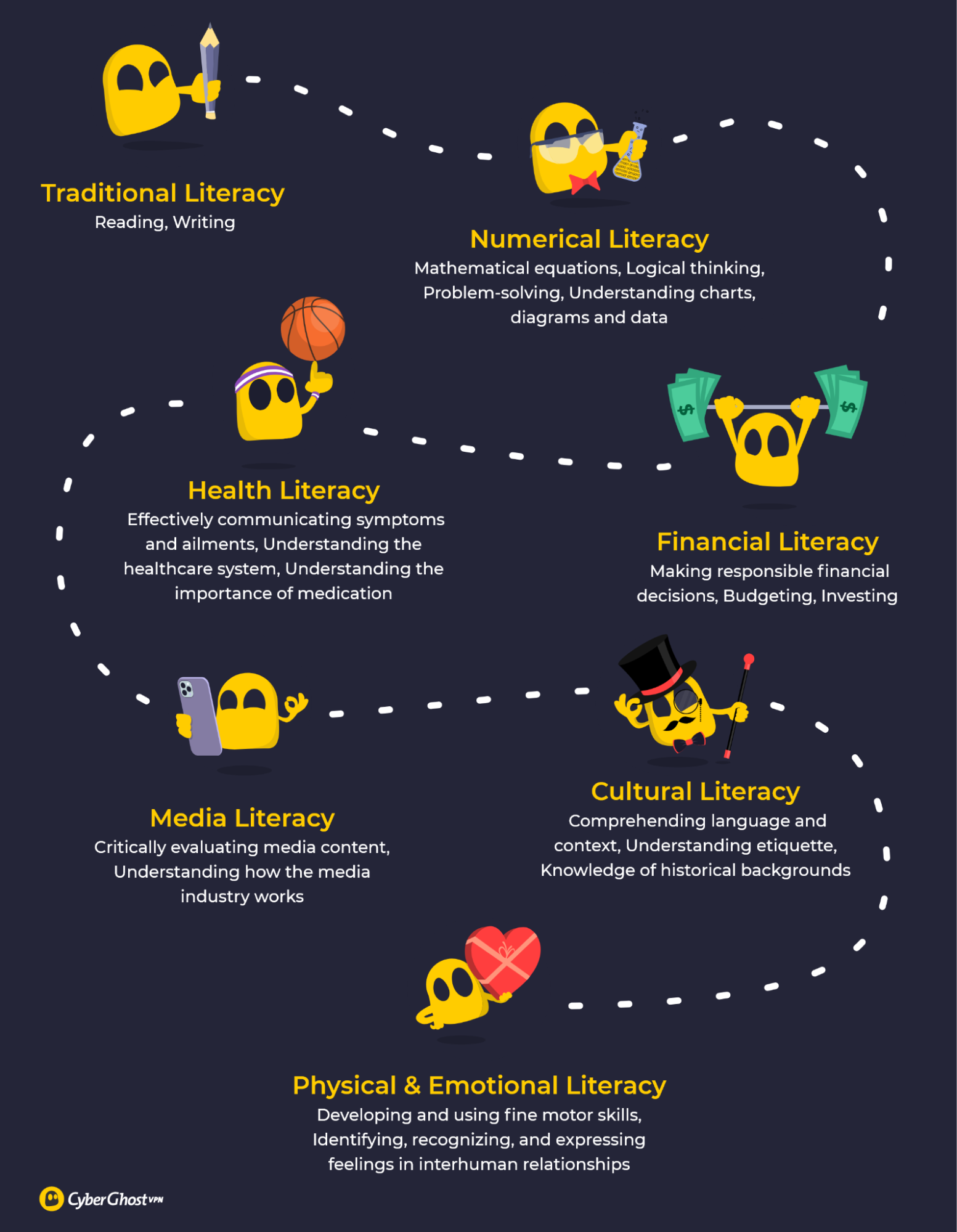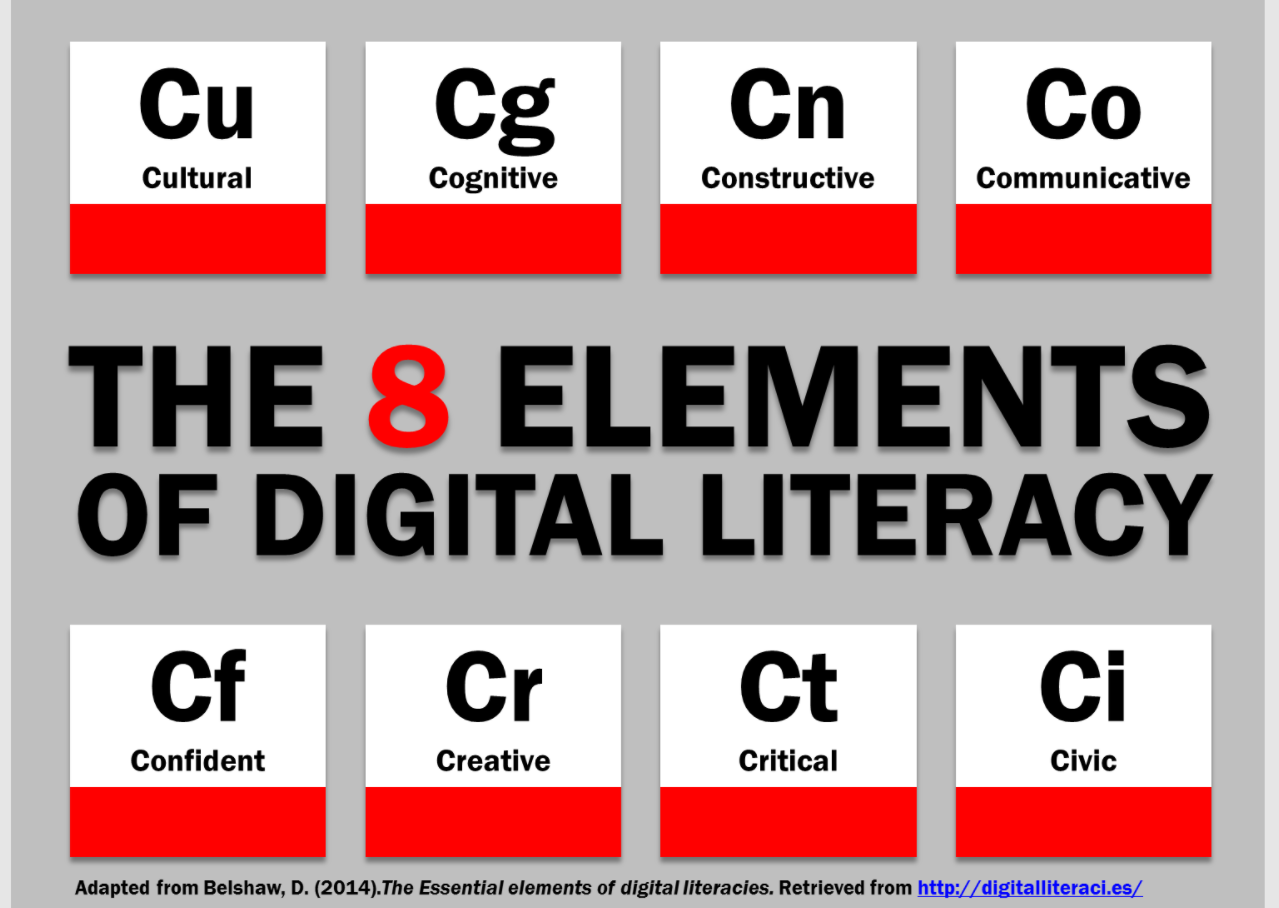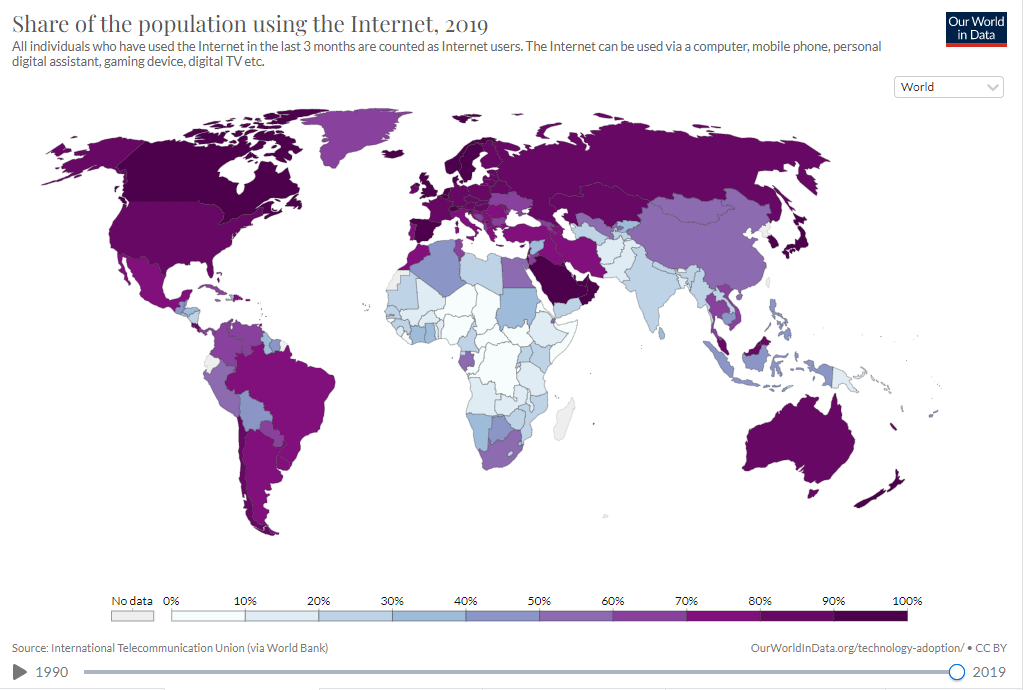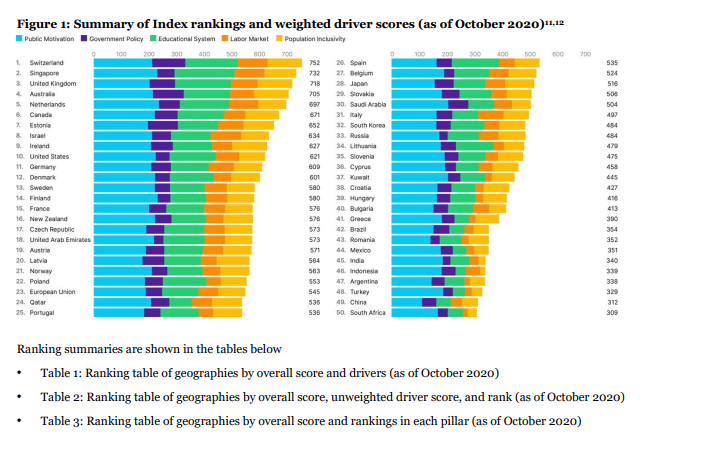It used to be that you learned your ABCs, and you were good to go. Now, you need your ABCDs, where D stands for Digital.
We shop, work, and learn remotely, have Alexa sing lullabies to our children, and share and acknowledge our achievements in the digital space.
To navigate through this new landscape, we need specialized skills. We should recognize these advancements’ risks and benefits. We need to be digitally literate.
Let’s take a closer look and find out how to be fit for the digital era.
What is digital literacy
Digital literacy (or cyber literacy) is an umbrella term for the ability to use computer and digital technologies effectively.
Contrary to popular belief, being digitally literate isn’t tied to your age or job. Instead, it’s all about the skills you need to develop, communicate, and thrive in the digital era. Cyber literacy includes skills like:
-
- 💡 Handling different devices and operating systems.
- 💡 Navigating through various online platforms.
- 💡 Understanding how the digital world works.
- 💡 Using technology creatively and innovatively to solve problems.
- 💡 Identifying information within different types of media.
- 💡 Evaluating digital resources critically.
- 💡 Recognizing and handling digital threats.
- 💡 Using digital tools in a safe and ethical way.
- 💡 Creating and sharing information effectively.
While digital literacy is relatively new, it’s still closely linked to other types of literacy. Together, they help us understand the world, connect with others, and develop personal assets.
Types of Literacy and Their Uses
| Types of literacy | Skills it’s used for |
| Traditional literacy |
|
| Numerical literacy |
|
| Health literacy |
|
| Financial literacy |
|
| Media literacy |
|
| Cultural literacy |
|
| Physical and emotional literacy |
|
Here’s a neat infographic detailing the components of each type of literacy:

You can develop and hone your digital skills over time with practice like other types of literacy. You’ll also find courses providing walkthroughs and information on perfecting your digital skills. You can even sharpen your digital knowledge for a career. Digital skills are in demand now more than ever!
As more people, corporations, and governments worldwide fall victim to cyberattacks, it’s becoming clear that we need a more cyber-aware population.
Understanding the elements of digital literacy
We tend to think learning is a linear process starting from point A and leading to point B through a preset track. In reality, though, learning means continually adapting to new information and norms. We’re still expanding the digital literacy skills to fit our technological advancements, expectations, and societal norms.
That’s why a binary system, like digitally literate-digitally illiterate, is rarely enough to describe people’s skill set. Instead, it makes more sense to focus on a set of guiding elements.
Let me present Dr. Doug Belshaw’s model.
His model provides a holistic approach to digital literacy through 8 aspects of cyber literacy. Dr. Belshaw refers to them simply as the elements of digital literacy.

Let’s break these elements down.
- Cognitive – The How to Do Element. We learn how to use technology efficiently and recognize common digital tools and features.
- Confident – The How to Belong Element. We learn how to be a part of the online community and understand how our digital space differs from our offline world.
- Cultural – The How to Behave Element. We learn how to understand the digital culture, how to respect netiquette, and how to protect our online privacy.
- Constructive – The How to Use Element. We understand how to appropriate, reuse, and remix content while being familiar with fair use and copyright laws.
- Communicative — The How to Communicate Element. We familiarize ourselves with the communication norms and expectations of various online tools.
- Civic – The How to Participate Element. We familiarize ourselves with various digital environments to prepare ourselves and others to participate in social movements.
- Critical – The How to Evaluate Element. We acquire reasoning skills to question, analyze, and evaluate digital content and context using information literacy.
- Creative – The How to Make Element. We learn to create and do innovative things in new ways within digital environments.
And if you wanted an easier way to remember Belshaw’s model, here’s an infographic with the elements of digital literacy.

This model could also be a suitable learning framework to improve digital literacy fluency. Like learning a new language, digital literacy is a development process. This rudimentary equation can simplify the process:
Access + Practice = Skill
While the corporate industries have taken center stage in cybersecurity initiatives, state-run organizations have been falling behind. This includes education and vocational organizations. Young ones are often victims of suboptimal digital education resources.
We need to start young for digital literacy
In this rapid technological advancement era, children need to immerse themselves in technology from a young age. Learning these skills early on will give them a step-ahead in cyber literacy. Unfortunately, they rarely have the resources to learn more about the online world, either at home or in school.

Nearly half of American children aged three and four use the internet at home, but it’s not all YouTube Kids or Pokemon Go communities. On average, about one million children experience identity theft or fraud every year. In the US alone, 1 in 50 children falls victim to these schemes because cybercriminals target their clean credit histories.
Cyberattacks aren’t just concerning for companies and governments. They’re also disturbing individuals.
Children can soak up basic cybersecurity skills as quickly as they pick up new technologies. They just need proper guidance.
Measuring digital literacy levels
Boosting digital literacy isn’t a one-size-fits-all situation. Since the digital space is ever-evolving, we can’t talk about universal guidelines that suit everyone’s needs.
You can improve your digital literacy, and especially cyber risk literacy, through a balanced combination of key factors. To be more specific, experts have identified five of them:
-
- ✅ Public motivation
- ✅ Government policy
- ✅ Educational system
- ✅ Labor market
- ✅ Population inclusivity
The Oliver Wyman Forum has quantified these metrics in the Cyber Risk Literacy and Education Index. They ranked people’s overall cyber savviness and awareness in different countries. The researchers evaluated the public’s access to digital tools and asserted the training programs available to develop cyber risk awareness. This aimed to measure good cyber risk literacy. Together, they show if a population is aware of cyber safety practices and has the motivation to apply them.
Let’s go more in-depth over these factors and how they paint a clearer picture of how we measure cyber literacy.
Public motivation
Cyber literacy requires constant practice because the digital world is in its infancy. The general population’s commitment to cybersecurity is an essential metric for cyber literacy. Casual users are the most significant risk group, so we need to push for better cyber awareness programs.

We need to understand cyber risks including:
-
- 🚩 Identify theft
- 🚩 Cyberbullying
- 🚩 Keyloggers
- 🚩 Malware
- 🚩 Social engineering
- 🚩 Information sharing on social media.
Academic research underrepresents how day-to-day users view cyber threats contrary to how governments or corporations fare against cyber threats.
Government policy

Cybersecurity needs legislation and governmental support. Bureaucracy and backward legislation shouldn’t impede long-term digital literacy investments. Even though laws don’t keep up with technological advancements, we need a stable and sustainable government policy to promote cyber literacy and digital inclusion.
That, in turn, helps countries develop a national cyber security plan. It also helps pave the way for experts to make innovations in the field.
Take, for example, the United States.
Back in 1983, President Ronald Reagan saw the movie War Games and saw beyond the fictitious cyber warfare. He asked his national security team if the supercomputer was possible in theory. When the answer came as Yeah, kinda… President Reagan started emphasizing cyber security.
At least, that’s how the story goes.
Decades later, the US government is struggling to keep up with cyber threats. Have a look at the cybersecurity challenges the Biden administration faces. We’re looking at ransomware threats, organized cyber attacks, the need for high-tech supply chains, and training in cyber response plans.
Unfortunately, many countries are falling behind.
Educational system

Exposing people to the school curriculum improved traditional literacy. Similarly, formal and vocational education systems can benefit from exposing their student body to cybersecurity. It could also help encourage students to pick STEM (science, technology, engineering, and mathematics) careers.
Primary and secondary school levels could also benefit from focusing on cyber literacy. Teachers would also need training as schools incorporate technology into their classrooms. That way, teachers could help students identify cyber risks and stay safe. Training should then be a top priority for remote learning environments normalized during the Covid-19 pandemic.
Labor market
The labor market often plays a substantial role in encouraging education in a particular area. From agricultural production to industrialization to computer technologies, the labor market played a pivotal role in the skills people chose to specialize in throughout history.
In the digital era, employers drive demand for cyber literacy skills. This impacts people’s motivation for cyber issues and helps evaluate digital literacy in the workforce.
Now, we’re seeing a real need for employees with better knowledge across different tech and cybersecurity branches. Think network architects, vulnerability analysts, penetration testers, incident analysts, and the like.
Employees have increasingly started to benefit from cybersecurity training. We now need to push programs that go beyond cybersecurity awareness and focus on skills and implementation.
Population inclusivity
We should always prioritize equal access to education. Cyber awareness and cyber literacy shouldn’t be any different.
Experts have previously stressed that digital inclusivity is a major global issue and impacts other areas such as education, healthcare, and the financial system.

Only about 35% of the population in developing countries has access to the internet, as opposed to an average of 80% in advanced economies. Inclusivity remains a crucial concern.
The top 15 countries for cyber risk literacy

Digital literacy is becoming an increasingly valuable asset. Some countries are taking the lead in making cybersecurity and digital risk assessment more accessible to the public.
Based on the previous 5 indexes, Switzerland, Singapore, and the UK take the crown.
Here’s why.
Switzerland
-
-
-
-
- Has comprehensive cybersecurity implementation and documentation.
- Lays out specifics concerning cyber risk assessment.
- Implements cyber security assessments within government agencies that require clear and achievable milestones.
-
-
-
Singapore
-
-
-
-
- Prioritizes cybersecurity education efforts.
- Keeps cyberspace secure through the Cyber Security Agency.
- Offers cyber wellness courses over multiple schools.
-
-
-
The UK
-
-
-
-
- Incorporates cyber risk awareness into its formal education.
- Has one of the strongest national security plans globally.
-
-
-
Programs like these have helped the countries perform well in cyber literacy metrics. They’re necessary to ensure a healthy and secure digital life.
Even if you don’t have the same resources as these governments, you can start securing your digital life today.
Start with a VPN, or “ virtual private network”.
Why Digitally Literate People Use a VPN
A VPN is an effective and user-friendly security tool. It redirects your traffic through an encrypted tunnel. That hides your IP address and digital footprint to keep snoopers and cybercriminals at bay.
CyberGhost VPN is a world-leading VPN service with 38 million users. It’s a great choice to secure your digital identity.

If you’re new to the cybersecurity world, you’ll find CyberGhost has easy-to-use apps to help you familiarize yourself with VPN technology. If you’re already comfortable with VPN apps, you’ll find plenty of features to play around with and customize your experience to suit your needs.
Here’s what you can expect with CyberGhost VPN.
💪 Military Grade Encryption
CyberGhost VPN uses uncrackable 256-bit AES encryption to secure your connection. This makes your data unreadable to third parties, keeping prying eyes away from your online activities. No one can see what sites you visit, what you download, or what you search.
💪 An Airtight No-Logs Policy
If you’re looking to protect your digital identity, you need CyberGhost VPN’s robust No Logs policy. We don’t monitor or record what you do on our servers, so we have absolutely none of your data. That means no one can compromise, sell, or share your private information.
💪 Apps for Every Device
We have dedicated apps for all major operating systems including Windows, macOS, iOS, iPadOS, Android, Android TV, Amazon Fire Sticks, Linux, and gaming consoles. Only 1 CyberGhost VPN subscription allows you to cover up to 7 devices simultaneously. That way, you can protect your entire digital life.
💪 Worldwide VPN Coverage
CyberGhost VPN gives you access to thousands of servers in 91 countries. Our servers provide the highest security and privacy standards. You can choose whichever one you want and change your location at any time.
💪 Dedicated Streaming & Gaming Servers

Cyber security is paramount, but you shouldn’t have to compromise on entertainment. This is why CyberGhost VPN has optimized servers that enable you to stream 35+ streaming services and play online games while you enjoy unrivaled security.
Try CyberGhost VPN completely risk-free with our 45-day money-back guarantee!
Cyber Literacy Helps You Navigate the Online World
The internet is a key source of information, connectivity, and knowledge. That said, it can also be a source of cyber threats, cybercriminals, and malicious attacks. Yet, we rarely focus on changing our security habits.
-
- 💡 Millions of people worldwide are choosing the same passwords year after year.
- 💡 People rarely increase their IoT security and leave their private information in the hands of the manufacturers.
- 💡 Around 34% of people fall victim to online scams.
- 💡 Identity theft is becoming an increasingly frequent problem, even among children.
- 💡 Data breaches are increasing in frequency and costs.
- 💡 Most people don’t encrypt their connection, not even with an easy-to-use VPN.
You need to take matters into your own hands and learn about the online world and the threats it poses. Don’t know where to start?
You can find a lot of good starting points right here, on CyberGhost VPN’s Privacy Hub. Here are a few examples of what you can learn:
-
- ➡ 10 tips on how to stay safe online
- ➡ 5 tips to create a unique and secure password
- ➡ 6 things you can protect with a VPN
- ➡ How to protect yourself from bandwidth throttling
- ➡ How to change your DNS settings and why
- ➡ 6 telltale signs of phone malware
- ➡ The truth (and false promises) of incognito mode
CyberGhost VPN is the best tool to protect yourself against all online threats and thrive in the digital space.
Do you feel like you now mastered your digital skills? What areas would you like to improve? Send us suggestions in the comments below.
FAQ
Cyber literacy (also known as digital literacy) refers to a particular set of skills that help us navigate the digital space, understand the implications of our actions, and protect ourselves from cyber threats. This can include anything from posting on social media to securing financial details online to spotting scams to finding reliable sources and everything in between.
Being digitally literate means that you have the skills to use modern technology appropriately, safely, and effectively. Just like we lock our doors, keep a clean house, and don’t yell at the cashier, we need to secure our digital identity, manage our files and folders, and learn netiquette. Digital literacy skills help with our time online, and they’re an invaluable asset to our careers.
Digital literacy’s 8 elements are: Cognitive, Confident, Cultural, Constructive, Communicative, Civic, Critical, and Creative. They define the many cyber literacy facets, including comprehension, expectations, the digital culture, netiquette, and more. They’re based on Dr. Doug Belshaw’s model and thesis.
Low digital literacy means people don’t have the digital skills to effectively and safely use digital technologies. While the media tends to treat the matter jokingly by mocking depictions of people deleting system32, the real-life repercussions of low digital literacy can be dire. It includes:
– Falling into scammers’ traps
– Getting devices infected with malware
– Compromising vital data on open Wi-Fi networks
– Not being to differentiate misinformation from credible sources
– Not being able to keep minors safe online
– Improperly disposing of junk files
And many more.



Leave a comment